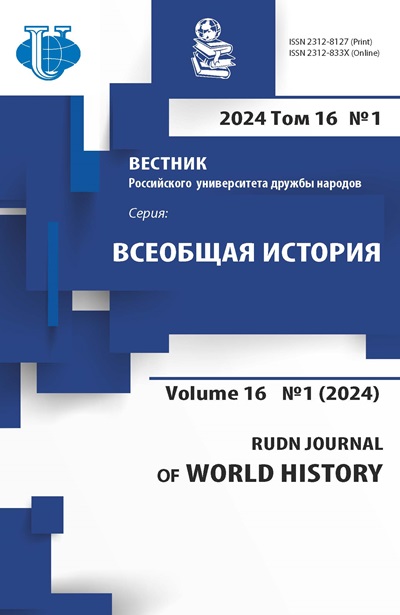TRANSFORMATION OF THE SCYTHIAN-SIBERIAN CULTURAL TRADITION OF BRONZE AGE (TO THE ISSUE OF SINO-CENTRAL ASIAN CULTURAL CONTACTS)
- Authors: Barinova EB.1
-
Affiliations:
- Russian Academy of Sciences, Institute of Ethnology and Anthropology
- Issue: No 3 (2014)
- Pages: 101-113
- Section: Articles
- URL: https://journals.rudn.ru/world-history/article/view/1050
Cite item
Full Text
Abstract
The problem of interaction between the peoples of Central Asia and China, which was manifested in the transformation of the Scythian-Siberian art of the Bronze Age, can clearly be seen in the archaeological material. Classification of the Scythian-Siberian art finds an affinity Scythian, Central Asian and Chinese "art forms" and gives the right to assume that Karasuk culture, tradition Yin style, images Tagar culture, Ordos cultural tradition is closely related. The archeological evidence suggest the movement of cultures of bronze metallurgical industry and animal style through the steppe zone and the Central Asian deserts to the bend of the Yellow River. Penetration of the Scythian-Saka tribes that resided in Inner Mongolia can be traced to the north of the Yellow River.
Keywords
About the authors
E Borisovna Barinova
Russian Academy of Sciences, Institute of Ethnology and Anthropology
Email: barinovaelena@rambler.ru
References













